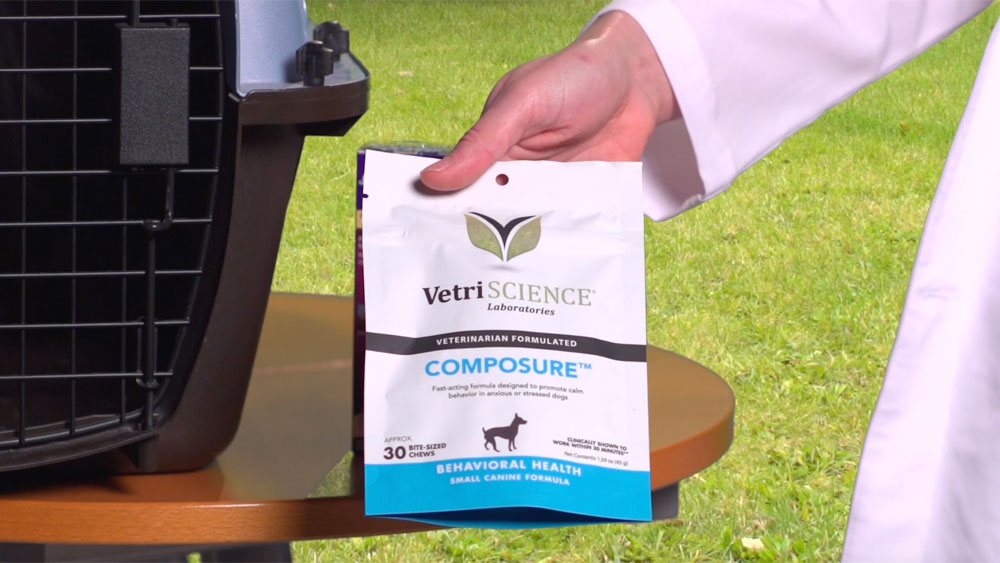rving with pets - paws on board
How to Calm Pet Anxiety
Dr. Fitz: Welcome to “RVing Today’s Paws on Board.” I’m Dr. Fitz, and this is Georgie. Is your dog panting and restless whenever they’re in the car, or does your cat meow for the entire trip? If you’ve seen these signs, your pet likely has travel anxiety. Some animals struggle primarily with longer road trips, but pets can also be anxious during the short rides as well. Some animals struggle primarily with longer road trips, but pets can also be anxious during the short rides as well. So, how can you tell if your pet suffers from travel anxiety?
 If you have a cat, you know that they can be very subtle when it comes to body language and communicating with their owners. But look for a cat that’s restless, can’t get comfortable in its carrier, is meowing repeatedly, and may even urinate or defecate in the carrier.
If you have a cat, you know that they can be very subtle when it comes to body language and communicating with their owners. But look for a cat that’s restless, can’t get comfortable in its carrier, is meowing repeatedly, and may even urinate or defecate in the carrier.
Dogs, overall, are a little less subtle. You may notice panting, drooling, restlessness, repeated whining or barking, and even urination or defecation in the car. Some owners even have difficulty getting their dogs into the car in the first place. It’s important to note that some of these signs are very, very similar to motion sickness. In a season one episode of “Paws on Board,” I discussed pet car sickness, some ways to prevent it, and possible treatment options. So, check out that episod bif you think your pet may be carsick instead of anxious.
Travel anxiety can be reduced in several ways. One of the most important methods is positive reinforcement and training. Medications only get us so far, and working your pet through some of the anxiety can be immensely helpful. For example, make the car or the carrier a positive place for your pet to be. Allow your dog to get in and out of the car, even if you don’t actually go for a ride. Give them treats or play with a toy after they’re in the car. And for cats, leave the carrier out at home and feed meals or treats near it to get them acclimated. Making sure that your pet is in a comfortable position in the car can be helpful as well. Cat carriers or crates should face front and have comfortable bedding inside. Dogs should be in a crate or belted in with some ability to change positions easily.
For long trips, also make sure that your pet is able to relieve themselves regularly. We stop at rest areas when we travel. Our pets should have that same opportunity.
 In spite of positive reinforcement, anxious pets generally need some type of medication to keep them calm. There are many prescription medications available, but there’s also nutraceutical options for our pets. There are even some calming pheromones available as sprays or collars. As always, not every medication is appropriate for every pet, and some pets need more than one medication to keep them calm and happy. Before giving your dog or cat any medication, consult with your vet to find the best treatment option for the situation. Let your vet know how you’ll be traveling and how long the trip will be. This helps us to develop a plan that can keep both you and your pet happy on the trip.
In spite of positive reinforcement, anxious pets generally need some type of medication to keep them calm. There are many prescription medications available, but there’s also nutraceutical options for our pets. There are even some calming pheromones available as sprays or collars. As always, not every medication is appropriate for every pet, and some pets need more than one medication to keep them calm and happy. Before giving your dog or cat any medication, consult with your vet to find the best treatment option for the situation. Let your vet know how you’ll be traveling and how long the trip will be. This helps us to develop a plan that can keep both you and your pet happy on the trip.
For more information about traveling safely with your pets and for more pet health information visit our Paws on Board section. I’m Dr. Fitz, and this is Georgie. Thanks for watching ‘Paws on Board’.

